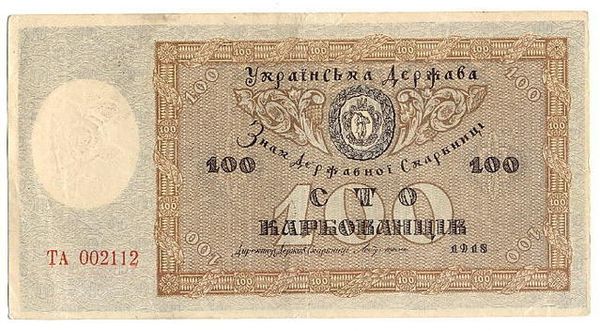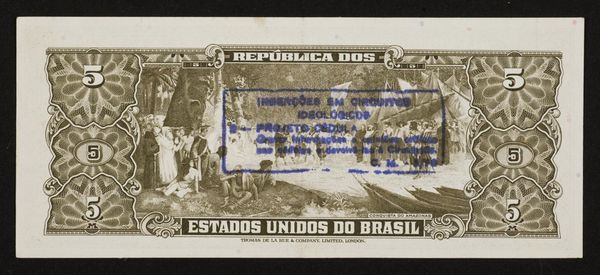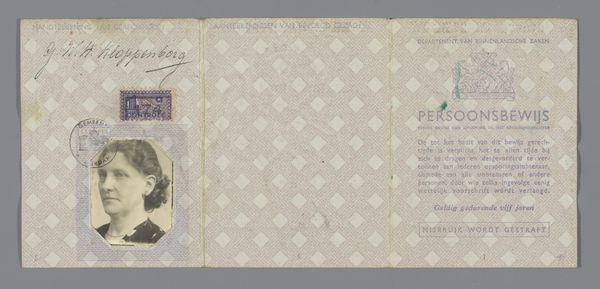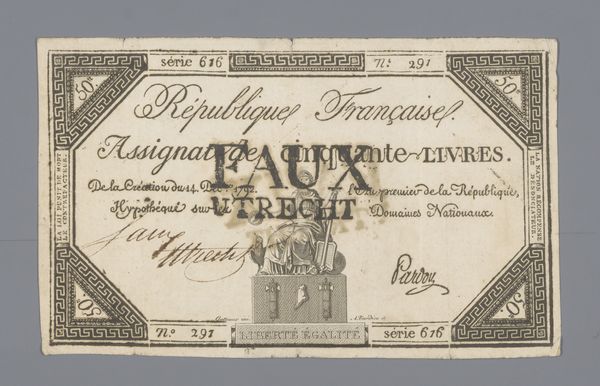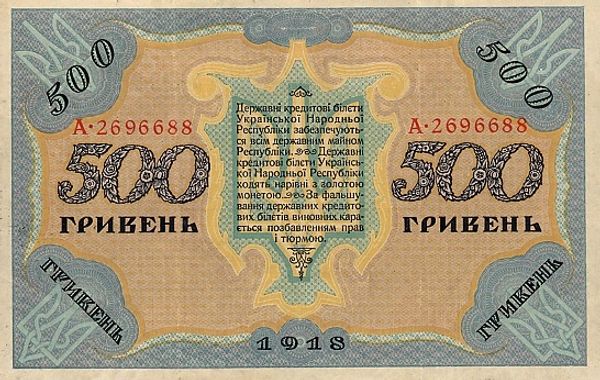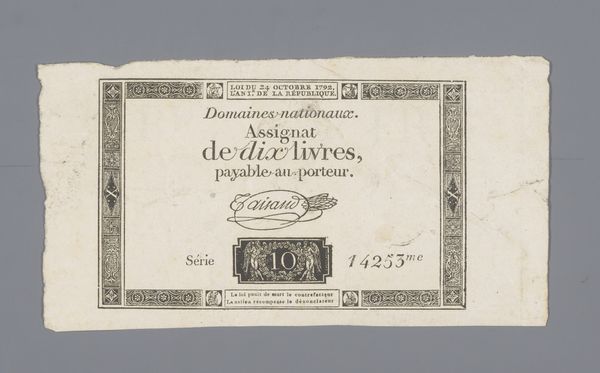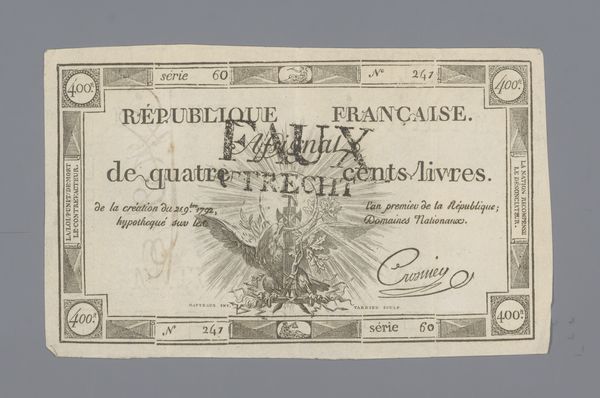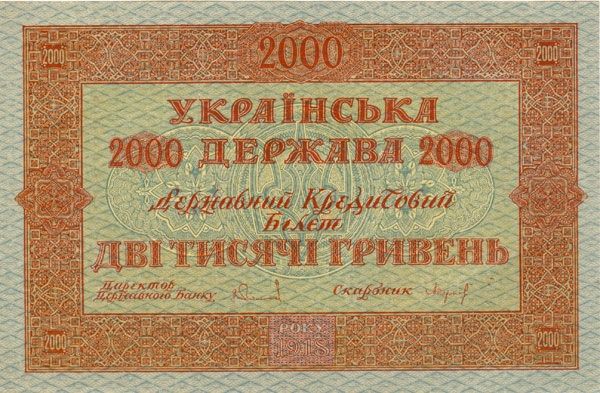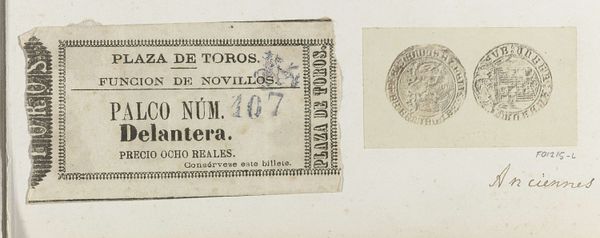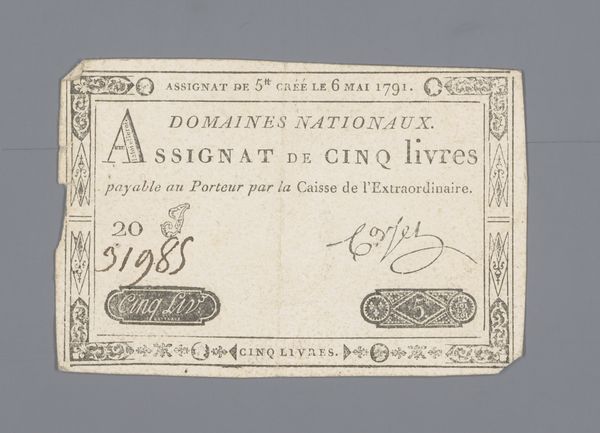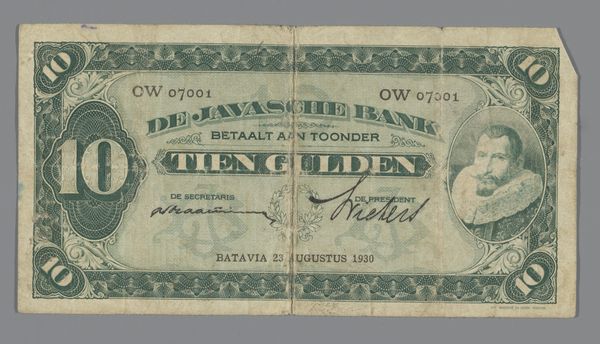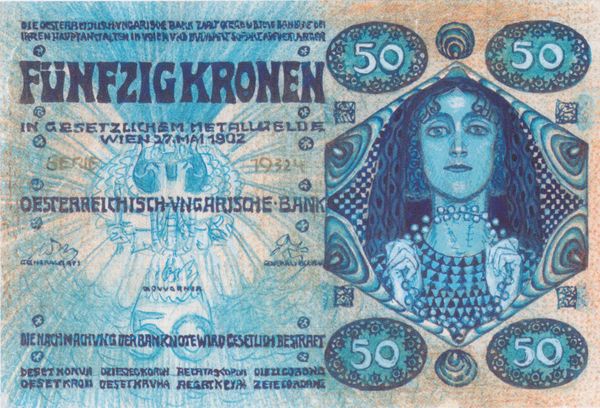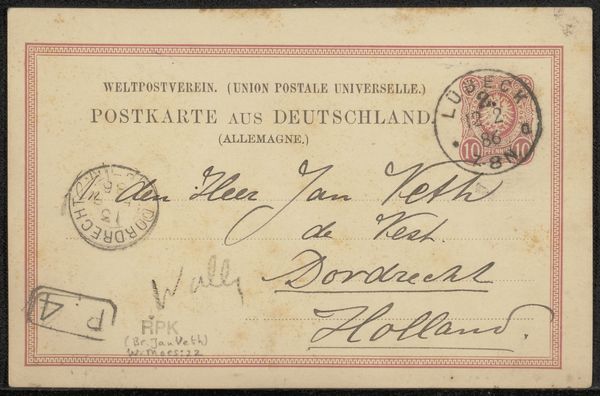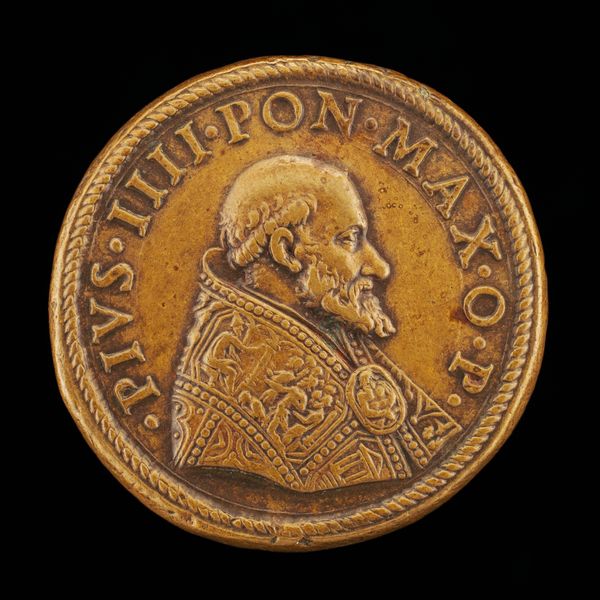
Copyright: © Cildo Meireles | CC-BY-NC-ND 4.0 DEED, Photo: Tate
Curator: Here we have Cildo Meireles's "Insertions into Ideological Circuits 2: Banknote Project." The artist, born in 1948, stamped a question onto Brazilian currency. Editor: The stark, black ink against the ornate, official design creates an immediate sense of unease. Like a whispered accusation. Curator: Exactly. The question, "Who killed Herzog?" refers to the journalist Vladimir Herzog, whose death in 1975 while in military custody became a symbol of resistance against the Brazilian dictatorship. Editor: Money, typically a symbol of stability, becomes a carrier of subversive messaging. The act of circulation itself becomes the artwork's distribution method. Curator: It's a powerful gesture of dissent, inserting a political question into everyday economic transactions. Editor: It also touches on how symbols and their meanings can be subverted and reclaimed. Currency is a potent symbol of power and control. Curator: Yes, transforming it into a tool of questioning is a clever and thought-provoking act. Editor: Makes you rethink the silent narratives embedded in everyday objects. Curator: Absolutely, and the power of art to disrupt those narratives.
Comments
tate 6 months ago
⋮
http://www.tate.org.uk/art/artworks/meireles-insertions-into-ideological-circuits-2-banknote-project-t12515
Join the conversation
Join millions of artists and users on Artera today and experience the ultimate creative platform.
tate 6 months ago
⋮
Meireles conceived his two Insertions into Ideological Circuits projects for an exhibition of conceptual art held at The Museum of Modern Art, New York in 1970 entitled Information. The Cédula or Banknote Project and the Coca-Cola Project (see Tate T12328) explore the notion of circulation and exchange of goods, wealth and information as manifestations of the dominant ideology. For the Banknote Project Meireles stamped subversive messages onto banknotes before returning them to normal circulation. The twenty-seven banknotes presented to Tate by the artist include varying denominations of cruzeiro notes – the Brazilian currency of the time – as well as US dollar bills. The messages, appearing in both English and Portuguese, include such anti-American slogans as ‘Yankees Go Home’ as well as calls for democracy and political freedom – ‘Straight Elections’ – and the words ‘Quem Matou Herzog?’ or ‘Who Killed Herzog?’, referring to a journalist who died in police custody under suspicious circumstances. Meireles stamped the banknotes on both sides – his message appearing on one side and the work’s title and the artist’s statement of purpose: ‘To register informations and critical opinions on bottles and return them to circulation’ – appearing on the other. The Coca-Cola Project follows a similar format: Meireles attached transparent labels with his slogans and the work’s title and purpose to the sides of Coca-Cola bottles which, once emptied of Coca-Cola, would be returned to the factory to be reused. Thus the artist’s messages circulated invisibly within Brazilian society. Meireles has commented:

